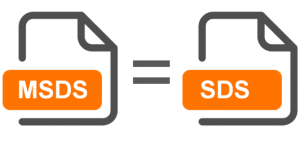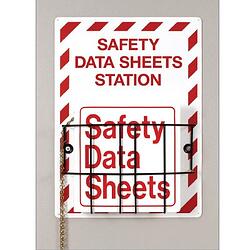"Revising OSHA's Hazard Communication standard will improve the quality and consistency of hazard information, making it safer for workers to do their jobs and easier for employers to stay competitive."
--U.S. Secretary of Labor Hilda Solis
 If you are not already aware that the Hazard Communication is undergoing a huge change in that “Material Safety Data Sheets” (MSDS) will now be known as simply “Safety Data Sheets” (SDS) as the Hazard Communication Standard (29 CFR 1910.1200) is now aligned with the Globally Harmonized System of Classification and Labeling of Chemicals (GHS). This update was made to provide a common approach to classifying chemicals and communicating hazard information on labels and SDS.
If you are not already aware that the Hazard Communication is undergoing a huge change in that “Material Safety Data Sheets” (MSDS) will now be known as simply “Safety Data Sheets” (SDS) as the Hazard Communication Standard (29 CFR 1910.1200) is now aligned with the Globally Harmonized System of Classification and Labeling of Chemicals (GHS). This update was made to provide a common approach to classifying chemicals and communicating hazard information on labels and SDS.
In OSHA’s words:
“Once implemented, the revised standard will improve the quality and consistency of hazard information in the workplace, making it safer for workers by providing easily understandable information on appropriate handling and safe use of hazardous chemicals. This update will also help reduce trade barriers and result in productivity improvements for American businesses that regularly handle, store, and use hazardous chemicals while providing cost savings for American businesses that periodically update safety data sheets and labels for chemicals covered under the hazard communication standard.”
In order to ensure chemical safety in the workplace, information about the identities and hazards of the chemicals must be available and understandable to workers. OSHA's Hazard Communication Standard (HCS) requires the development and dissemination of such information:
- Chemical manufacturers and importers are required to evaluate the hazards of the chemicals they produce or import, and prepare labels and safety data sheets to convey the hazard information to customers.
- All employers with hazardous chemicals in their workplaces must have labels and safety data sheets for their exposed workers, and train them to handle the chemicals appropriately.
Major changes to the Hazard
Communication Standard
- Hazard classification: Now provides specific criteria for classification of health hazards, physical hazards and mixtures.
- Labels: Chemical manufacturers and importers will be required to provide a label that includes a harmonized signal word, pictogram, and hazard statement for each hazard class and category. Precautionary statements must also be provided.
- Safety Data Sheets: Will now have a specified 16-section format.
- New 16 section format:

- Identification
- Hazard(s) identification
- Composition/information on ingredients
- First-Aid measures
- Fire-fighting measures
- Accidental release measures
- Handling and storage
- Exposure controls/personal protection
- Physical and chemical properties
- Stability and reactivity
- Toxicological information
- Ecological information
- Disposal considerations
- Transport information
- Regulatory information
- Other information, including date of preparation or last revision
- Information and training: Employers are required to train workers by December 1, 2013 on the new labels elements and safety data sheets format to facilitate recognition and understanding.
- Training to be included:
-
Training on label elements
- Product identifier
- Signal word
- Pictogram
- Hazard statement(s)
- Precautionary statement(s)
- Name, address and phone number of the chemical manufacturer, distributor, or importer
-
Training on the new 16-section format
The first deadline in the implementation phase is Dec. 1, 2013. By this date, employers must train workers on the new label elements and safety data sheet format. OSHA’s Hazard Communication website has the following QuickCards and OSHA Briefs to assist employers with the required training.
• Safety Data Sheet OSHA Brief
Let Safety Training Services help you through this first deadline by getting yourself and your staff trained on the new Hazard Communication Standard today! Find out how we can do so by clicking below!



 PPE is designed to protect you from hazards related to your work.
PPE is designed to protect you from hazards related to your work.  Global Harmonization changed the label from MSDS to SDS, with a permanent change that came in 2015. OSHA requires that these data sheets be available to employees for potentially harmful substances handled in the workplace. Basically, these are intended to provide the workers and also emergency personnel the information necessary to safely handle/work with said substances. This information may include physical and/or chemical data and format may differ (currently there is no official way to format SDS). Below are some examples of what information you may find on SDS.
Global Harmonization changed the label from MSDS to SDS, with a permanent change that came in 2015. OSHA requires that these data sheets be available to employees for potentially harmful substances handled in the workplace. Basically, these are intended to provide the workers and also emergency personnel the information necessary to safely handle/work with said substances. This information may include physical and/or chemical data and format may differ (currently there is no official way to format SDS). Below are some examples of what information you may find on SDS.
 ALWAYS read/follow the labels on the ladder. Until the climber is familiar with this information, they are not considered "adequately" trained!
ALWAYS read/follow the labels on the ladder. Until the climber is familiar with this information, they are not considered "adequately" trained!

